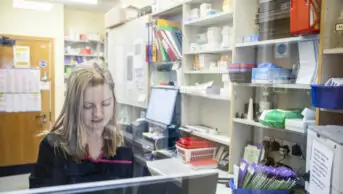
Shutterstock.com
Preparations for the foundation training year for trainee pharmacists in the summer of 2021 were like no other year. Not only was there the change in terminology, from ‘preregistration pharmacists and tutors’ to ‘trainee pharmacists and designated supervisors’, alongside the ongoing impact of the COVID-19 pandemic, but the General Pharmaceutical Council (GPhC) also introduced its interim learning outcomes for foundation training and sign off using Miller’s triangle.
Those in training placements commissioned by Health Education England (HEE) have been provided with a portfolio of evidence and practice-based assessment tools to assist the learning outcomes sign off in the workplace, further supported with an assessment strategy, activity guide and videos of how and in what circumstances these could be implemented during the training year. The assessment tools range from trainee reflective accounts and contribution to care logs, which they were asked to complete themselves, to more formal supervised learning events (SLEs) that had to be completed with a designated (or other appropriate) supervisor, such as a case-based discussion, mini clinical evaluation tool (known as ‘mini-CEX’), direct observation of practice and medicines-related consultation framework.
I have worked in education and training for more than a decade, so most of the assessments were familiar to me and I already had practical experience of using many of them with pharmacists as part of their clinical diplomas.
We found the direct observation of practice the most challenging
HEE provided a wealth of documents, video guides and webinars to introduce the tools but, despite this, it was challenging to put the new assessments into practice on the ground. As education programme director for my organisation, I was tasked with supporting my designated supervisors and trainees in using these, with a portfolio that was evolving as we went along.
Some were easier to implement than others. For instance, the contribution to care logs and reflective accounts were similar to what was expected from the previous portfolios of evidence that trainees collected from day-to-day activities. A medicines-related consultation framework could be used when undertaking patient counselling and mini-CEX could be used for patient assessment and medicines optimisation such as medicines reconciliation. We found the direct observation of practice the most challenging, as although trainee pharmacists were undertaking lots of processes each day according to protocols and procedures, it was sometimes a challenge to remember to be observed and to complete this SLE.
The biggest challenge, however, was working out how all the new elements fit together, and everyone had to work together to do this. Over the course of the past year, we have gradually familiarised ourselves with where the tools fit into the training year and the types of activities that can be achieved, but it is still far from being a complete picture.
I decided to put together a summary guide for the 2022/2023 training year to pull all of our past years’ experience into one place and enable our trainees and designated supervisors to hit the ground running. This has been pulled together from the HEE documents, previous experience from using the SLEs in other settings and from working through the portfolios of our trainees this year.
It was a challenge to put it together owing to the range of resources from GPhC and HEE and it is still a work in progress, but it will evolve hopefully into a more formal booklet, as we use it with our next trainees and incorporate their experiences. It’s an important start and puts us in a better position than this time last year.
Be proactive and start early, do not leave everything until your first 13-week review
For new trainees in the coming year using the portfolio and assessments, my advice would be to read the HEE documents which, although lengthy, provide a wealth of practical information. For visual learners, the videos on the HEE website are an excellent tool too.
If you can, speak to those who have completed the pathway this year and ask them what they did. For anyone in the foundation year, get a good dialogue going with your designated supervisor to help identify when and how you can use the SLEs. Be proactive and start early, do not leave everything until your first 13-week review, especially the SLEs as these take time to plan into diaries and clinical activities or rotations, not to mention the time they require to undertake, feedback and reflect on. I have always advised trainees to keep a log of activities — whether that be in a notebook, phone, or laptop — as you go along, so you have records and situation to draw upon.
Overall, the changes made to the foundation training year have been largely positive, if a little daunting at first. I hope that when I reflect again this time next year it will be more ‘business as usual’ rather than new and confusing.
Laura Healey is lead pharmacist, education and training, at University Hospitals of Morecambe Bay NHS Foundation Trust


